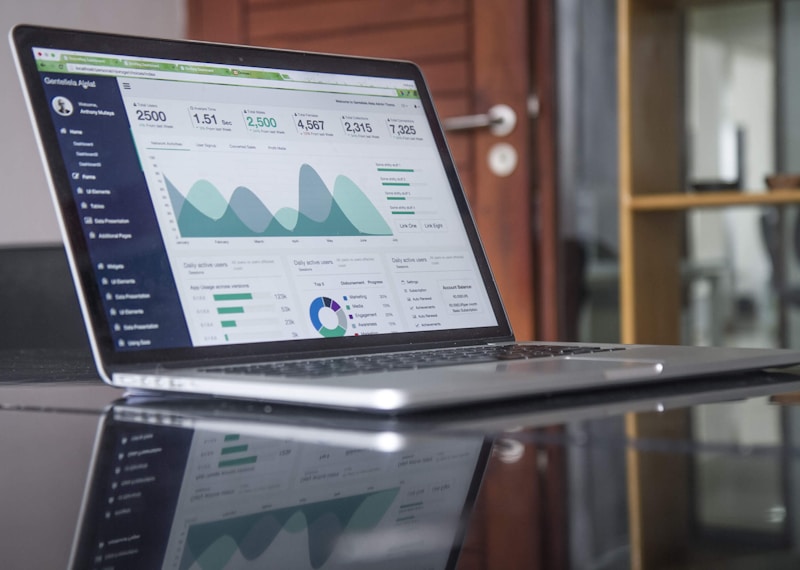Understanding insider trading patterns can provide valuable insights into a company's future prospects. When corporate executives, directors, and other insiders buy or sell shares of their own company, these transactions often signal their confidence—or lack thereof—in the company's direction.
Insider trading data is publicly available through SEC filings, and savvy investors have long used this information to inform their investment decisions. However, not all insider transactions are created equal. The context, timing, and magnitude of these trades matter significantly.
Introduction
The world of insider trading analysis is both an art and a science. While the data itself is objective, interpreting what it means requires understanding the nuances of corporate governance, market dynamics, and individual motivations.
"In a world older and more complete than ours they move finished and complete, gifted with extensions of the senses we have lost or never attained, living by voices we shall never hear." — Olivia Rhye, Senior Market Analyst
When analyzing insider transactions, it's crucial to distinguish between routine sales and meaningful purchases. Executives often sell shares for personal financial planning reasons—diversification, tax planning, or liquidity needs. However, when multiple insiders are buying shares, especially in significant quantities, it's worth paying attention.
Software and Tools
Modern investors have access to sophisticated tools for tracking and analyzing insider trading data. These platforms aggregate SEC filings, calculate transaction values, and identify patterns that might not be immediately obvious.
Key Features to Look For
When choosing an insider trading analysis platform, consider the following:
- Real-time filing alerts: Get notified immediately when insiders file Form 4s
- Transaction value calculations: Automatically calculate the dollar value of each transaction
- Pattern recognition: Identify clusters of buying or selling activity
- Historical data: Access years of historical insider trading data for trend analysis
- Filtering capabilities: Filter by transaction type, insider role, company size, and more
Popular Analysis Tools
- SEC EDGAR Database: The official source for all SEC filings, though it requires manual searching
- InsiderIQ Pro: Comprehensive platform with real-time alerts and advanced analytics
- OpenInsider: Free resource with basic insider trading data and search capabilities
- WhaleWisdom: Focuses on 13F filings but includes some insider trading data
# Example: Analyzing insider transaction patterns
import pandas as pd
def analyze_insider_patterns(transactions):
"""
Analyze insider trading patterns to identify significant activity.
Args:
transactions: DataFrame with insider transaction data
Returns:
Dictionary with analysis results
"""
# Filter for purchases only
purchases = transactions[transactions['transaction_type'] == 'P']
# Calculate total value
total_value = purchases['shares'] * purchases['price']
# Identify clusters (multiple insiders buying within 30 days)
purchases['date'] = pd.to_datetime(purchases['date'])
purchases = purchases.sort_values('date')
return {
'total_purchase_value': total_value.sum(),
'number_of_insiders': purchases['insider_name'].nunique(),
'average_price': purchases['price'].mean()
}
Other Resources
Beyond software tools, there are several other resources that can enhance your insider trading analysis:
Educational Materials
Understanding the regulatory framework is essential. The SEC requires insiders to report their transactions within two business days, providing transparency into their trading activity. However, the rules can be complex:
- Form 4 Filings: Required for most insider transactions, filed within 2 business days
- Form 144 Filings: Required when insiders plan to sell restricted securities
- 10b5-1 Plans: Pre-arranged trading plans that allow insiders to trade on a schedule
Market Context
Always consider insider transactions within the broader market context. A CEO buying shares during a market downturn might be more significant than the same purchase during a bull market. Similarly, sector-specific trends can influence the interpretation of insider activity.
Red Flags to Watch For
While insider buying is generally a positive signal, there are situations that warrant caution:
- Routine selling programs: Many executives have automatic selling plans that execute regardless of their current sentiment
- Tax-loss harvesting: End-of-year sales might be for tax purposes rather than negative sentiment
- Diversification needs: Long-term employees may need to diversify concentrated positions
- Options expiration: Sales might be related to expiring stock options rather than negative outlook
Conclusion
Insider trading analysis is a powerful tool in an investor's toolkit, but it should never be used in isolation. The most successful investors combine insider trading signals with fundamental analysis, technical indicators, and broader market trends.
Remember that insider transactions are just one piece of the puzzle. A single insider purchase doesn't guarantee stock price appreciation, and a sale doesn't necessarily signal trouble ahead. The key is to look for patterns, understand the context, and use this information as part of a comprehensive investment strategy.
As you develop your analysis skills, you'll learn to distinguish between noise and meaningful signals. The most valuable insights often come from clusters of activity—when multiple insiders are buying, when transactions are unusually large, or when the timing suggests insider knowledge of upcoming positive developments.
Stay curious, keep learning, and always do your own research. The markets reward those who take the time to understand the data behind the headlines.


